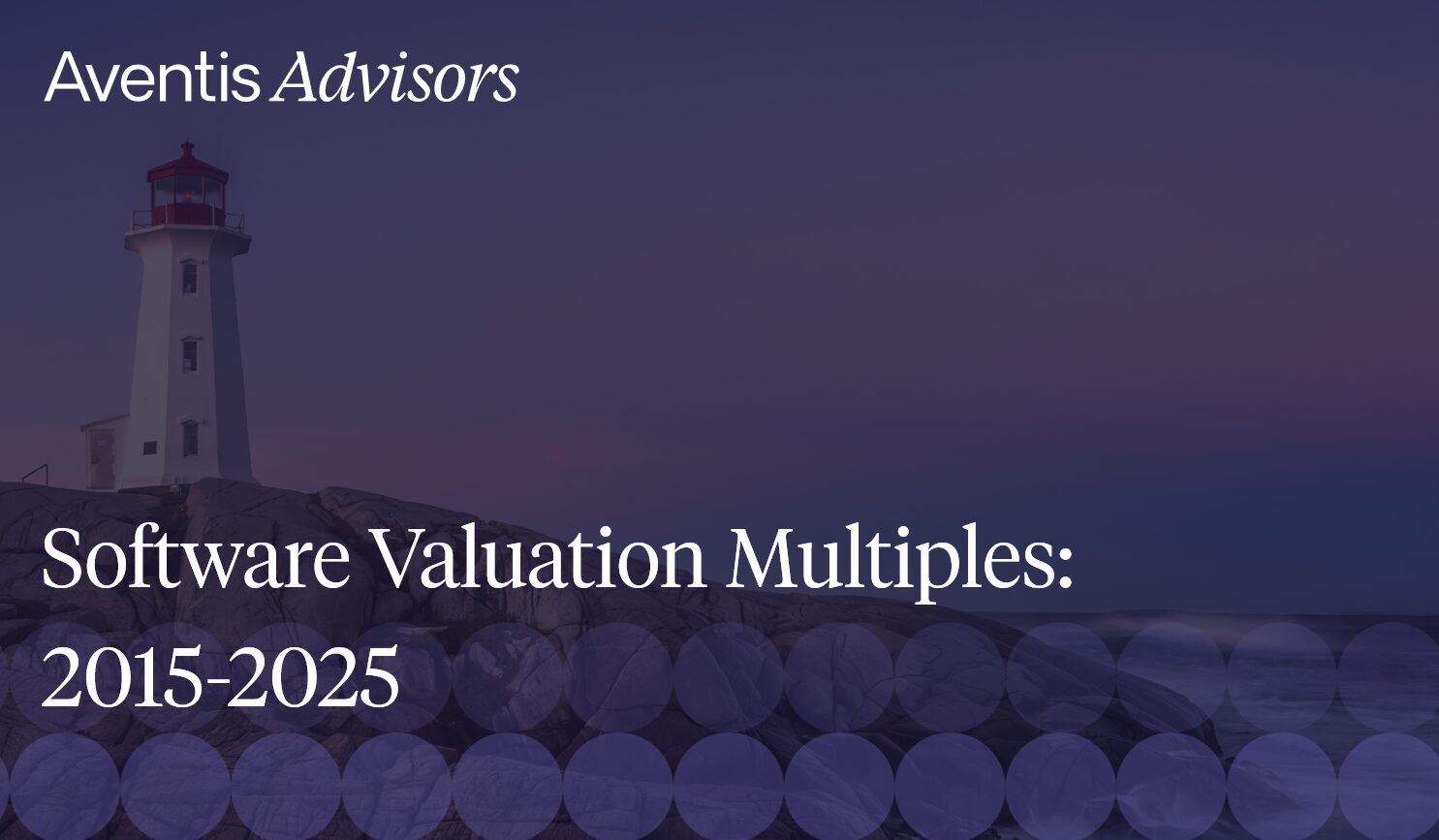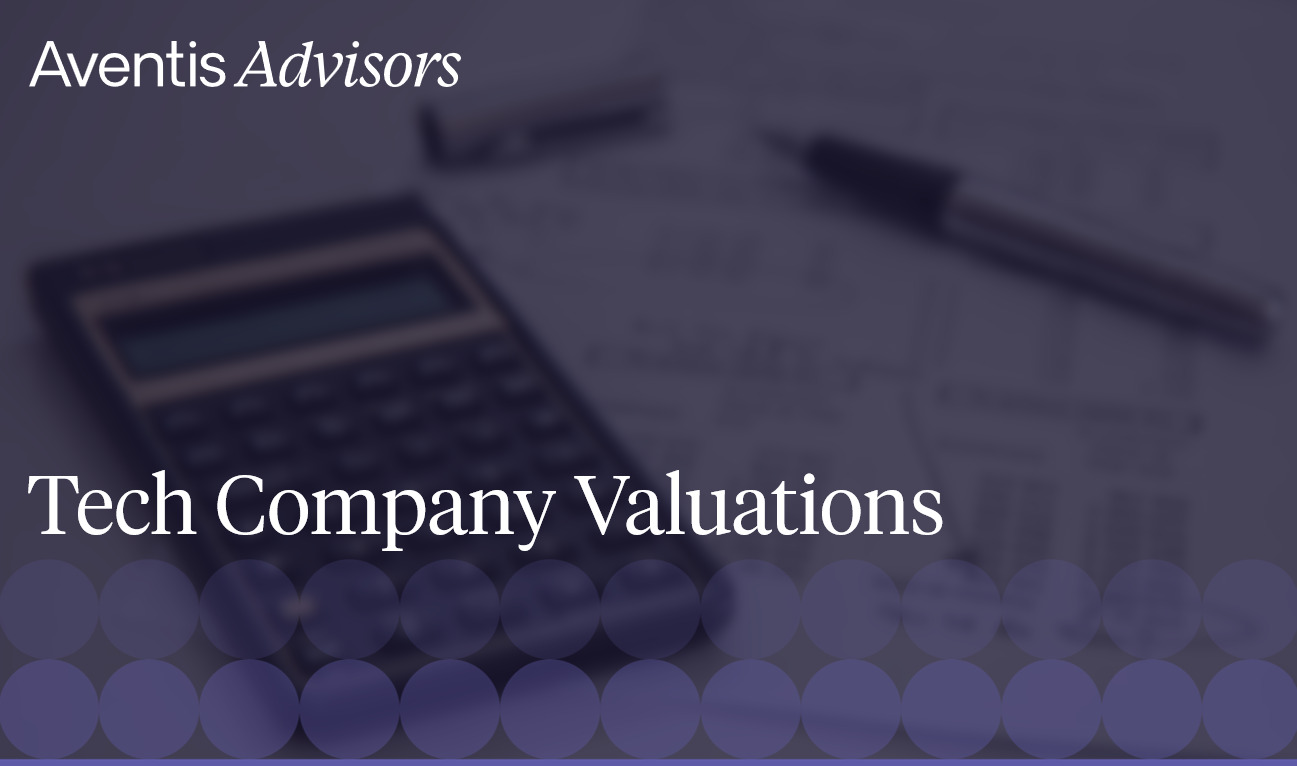Getting the valuation of your SaaS business right can make or break once-in-a-lifetime decisions like a company sale or a significant capital raise.
That’s why it’s essential to understand current valuation practices. Knowing these can help you with:
- Negotiating an acquisition offer: Many potential buyers prefer to lowball in their first offers. Understanding the market environment can provide invaluable insight and ammo for negotiations.
- Raising capital: Choosing a to-the-point valuation figure for your next round ensures you don’t undervalue your company or discourage potential investors.
- Understanding your company value: This can help you manage your wealth tied to the business.
- Taking strategic decisions: So that you can maximize company value and understand what metrics drive SaaS valuation in the current cycle.
In this post, we look at the valuations of public SaaS companies and what has driven their impressive boom and bust cycle over the past eight years. We also analyze valuations in M&A transactions to provide better guidance to founders of mid-size SaaS companies.
Table of Contents
II. Public Market SaaS Valuations
- Our Sample
- SaaS Stock Market Performance
- SaaS Revenue Multiples
- Valuation Drivers: Growth Rates
- Valuation Drivers: Profitability
- Valuation Drivers: Rule of 40
III. M&A Transactions SaaS Valuations
- Our Sample
- EV/Revenue and EV/EBITDA Multiples for SaaS Companies
- Valuation Drivers: Company Size
- SaaS vs On-Premise Software Company Valuations
- Public Markets vs M&A Transactions
What is a SaaS Business?
SaaS (Software as a Service) businesses have experienced unprecedented expansion over the past several years and now dominate the software landscape.
Rapid growth and stock market success made “SaaS” an overused buzzword. Many technology companies chose to label themselves as SaaS to attract investors enamored with the term. Because of this overuse, we think it’s essential to first define what a SaaS company is before analyzing SaaS valuation multiples.
A true SaaS company ticks these three boxes:
- Sells a license to use their software: The core business model should be software licensing, unlike many tech-enabled business models, such as marketplaces or FinTech that primarily generate commissions.
- Delivers in the cloud: SaaS should be delivered in the cloud, centrally hosted and managed by the vendor. Software businesses that are in the process of transitioning to the cloud, yet derive most of their revenue from on-premise software, are not considered SaaS businesses in our analysis.
- Delivers “as a service”: Customers should pay for the software on a subscription, pay-per-use or pay-per-transaction basis and always have access to the most recent version of the software.
For an overview of valuations across software segments (both SaaS and on-premise), check out our separate analysis.
AI Valuation Mutliples
Public Market SaaS Valuations
Our Sample
In our analysis, we look at the most liquid SaaS companies listed on top stock exchanges:
- Companies listed on NASDAQ or NYSE
- $1B+ market cap as of 13.01.2023
We tried to include fewer companies to focus solely on pure-play SaaS businesses. We therefore excluded companies that:
- Generate a significant part of the revenue from on-premise software: SAP, Intuit, Palantir, etc.
- Generate a significant part of the revenue from resale: Twilio, etc.
- Generate a significant part of the revenue from commissions on GMV/purchases, e.g. Applovin, The Trade Desk, etc.
We started with a sample of 26 companies in 2015. We have since managed the addition of new SaaS companies to our sample and in case companies get delisted due to being taken private by private equity funds, they remain in our index till the point they were publicly traded. As of 2025, our index sample consists of 64 SaaS companies.
SaaS Stock Market Performance
SaaS companies have experienced an unprecedented run since 2015. While the post-COVID monetary stimulus certainly provided the final push forward, we’ve seen that the bulk of appreciation happened during a period of stable growth in 2015-2020.
Our proprietary Aventis SaaS index peaked at more than 700 points (100 = January 1st, 2015) in early 2021, marked by a meme stock mania and SPAC boom. This was also a period of peak IPO activity.
The Federal Reserve put an end to the bull market in early 2022 and aggressively increased interest rates.
Most SaaS companies we analyzed are currently unprofitable, so they were the ones to feel the pinch as future cash flows suddenly became worth much less. Since its peak, the Aventis SaaS index has decreased by more than 60%.
By the end of H1 2023, the index rebounded significantly, fuelled by the market rally and AI hopes. That said, the rebound was largely driven by established large-cap companies, such as Adobe, Salesforce, Servicenow, while many smaller SaaS players remained stagnant.
With falling investor sentiment, the IPO market virtually froze. We saw an IPO freeze in the SaaS market between November 2021 when there were no major SaaS listings, just a couple of take-private deals (Coupa Software, KnowBe4, Momentive) and September 2023 till the listing of Klaviyo.
By the end of 2024, ServiceTitan launched its IPO which hints at more SaaS companies likely to enter the public markets in 2025. The SaaS IPO market is expected to pick up in the coming period.
Please note that the index is created using end of the month data.
SaaS Revenue Multiples
EV/Revenue is the most common multiple used for SaaS valuation. Since most companies aren’t profitable while they actively invest in growth, profit multiples are not applicable. At the same time, the revenue multiple divided by the target future profit margin can give a ballpark estimate of the future EBITDA multiple. For example, a company trading at 5.0x Revenue that expects to reach a 30% EBITDA margin implies a future 16.7x EV/EBITDA.
The EV/Revenue multiple for our sample of SaaS companies grew slowly for most of the period between 2015 and 2020. This expansion partly drove increases in share prices, but the companies, in parallel, grew their revenue.
The big valuation jump started in April 2020, when the median EV/Revenue multiple increased from a COVID bottom of 9.8x to almost 20.0x, with companies in the 1st percentile valued at above 30.0x. The highest multiple recorded in our sample was Asana, which closed at an incredible 89.0x LTM Revenue on November 9, 2021.
After lingering around 18.0-19.0x for most of 2021, the median revenue multiple started its rapid descent in early 2022, just as monetary policy tightened. By the beginning of 2023, the median revenue multiple declined to 6.7x. This was the effect of the post-pandemic era characterized by high interest rates and tighter monetary policy environment.
In our most recent SaaS valuation multiples update as of January 2025, we see that EV/Revenue multiple have climbed slightly to 7.3x
The uptick to a 7.3x EV/Revenue multiple for SaaS companies in January 2025 can be attributed to a combination of factors, including improved profitability trends, and a positive market reaction to AI integration within SaaS products, which has helped boost investor sentiment despite the previous downturn.
The rise and fall of revenue multiples can be explained by the changing dynamics between the two most important factors determining a valuation: growth and profitability. We take a closer look at both in the following sections.
Valuation Drivers: Growth
Revenue growth has always been a crucial SaaS metric.
The calculation is simple. If customer lifetime value (LTV) is larger than customer acquisition cost (CAC), keep investing in new customer acquisition. Because profitability will follow at scale, short-term profits are irrelevant, and growth is key.
As in any new industry, the growth rate starts high and then declines as it becomes difficult to increase revenue from a larger base. By Q3 2020, a median SaaS company’s revenue growth slowed to 20% YoY and was on a clear downward path (see chart below).
The growth rates partly explain the massive increase in revenue multiples in 2020-2021. As companies were digitizing during COVID, the median growth rate jumped by 11 percentage points to 31%. This immediately fed through to the revenue multiple, which is sensitive to the growth rate, especially when interest rates are low.
Yet the jump seemed short-lived as the growth rate returned to its long-term trajectory. Given the higher revenue base and upcoming slowdown, growth can fall even below 15%. The collapse in growth rates is one of the most fundamental factors contributing to the decline in multiples.
As of Q4 2023, a median SaaS company grows its revenue at 17% annually, a figure much below pre-COVID levels. In the first quarter of 2024, the median revenue growth was 16%.
In 2024 we see that the median revenue growth remained constant at 16%. While consensus estimates point to slower growth in early 2025, we anticipate a promising acceleration in the second half of 2025, driven by innovative SaaS verticals, and with AI complementing SaaS offerings.
Valuation Drivers: Profitability
The other part of the SaaS company valuation equation is profitability because cash flow is essentially the most important matter in a company’s valuation. From 2015 to 2019, SaaS companies were on track to profitability with improving EBITDA and net income margins. But these improvements stagnated after 2019 and even declined slightly as early-stage, loss-making companies entered our index. For most of the past three years, a median public SaaS company operated with an 8-14% net loss. During that same time, immediate cash flow generation became less important as interest rates stayed close to zero.
Because of this, increased interest rates were a big blow to public SaaS companies’ valuations. While yields on short-term Treasuries grew to over 5%, valuation multiples for companies with significant losses declined the fastest.
With this change in the economic environment, SaaS businesses are now adapting to the new paradigm. Many have laid off staff, implemented a hiring freeze, decreased investments, and aggressively cut operating expenses.
The most exposed companies have high burn rates compared to their cash balance. With the IPO market frozen and debt getting increasingly expensive, many businesses need to break-even as soon as possible to stay afloat.
SaaS profitability trend in 2023
In Q1 2023, only 23 firms in our sample of 68 were profitable on a Net Income level, and 30 were profitable on an EBITDA level. Those that were profitable had a median revenue multiple of 7.8x, compared with 6.7x for unprofitable companies.
Let’s take Descartes, a vendor of SaaS logistics software as an example. In early 2023 they traded at 13.7x revenue while generating a healthy 40% EBITDA margin. The company was relatively immune from the tech sell-off that followed, while the stock prices of its peer SaaS companies plummeted.
By Q4 2023 we observed a fundamental shift as SaaS profitability margins advanced toward positive territory. Companies in our index touched an all-time high 4 quarters average EBITDA margin at +3%, while the 4 quarters average net income margin indicated a break-even level at 0%.
SaaS profitability trend in 2024
In Q1 2024, we see that the median EBITDA margin for SaaS has reached a new all-time high of 7%. This shows profitability is becoming a major focus for SaaS, and if the trend continues, we will soon see that SaaS will break even before the end of 2024. Currently, the median net profit margin stands at -1%.
SaaS 4 quarters average EBITDA margins have continued to advanced towards positive territory and reached 5% in Q2 2024. Also, net margin improved from -1% to 0% QoQ.
As of Q3 2024, both median EBITDA margin and net margins are positive, being 6% and 2% respectively. By the end of 2024 we saw that layoffs and drastic cost custting measures by SaaS companies slowed down. However, the focus on profitability remains a key driver for SaaS businesses.
Valuation Drivers: Rule of 40
The Rule of 40 is calculated as a sum of the company’s growth rate and profitability. As the argument goes, SaaS companies can easily choose between revenue and growth, so fast growth compensates for low profitability and vice versa. A healthy SaaS company is supposed to score above 40 on this metric.
As of January 2023, revenue growth decelerated for most companies. This slowdown wasn’t compensated by the increase in profit margin. Only a few companies exceeded the Rule of 40 with a comfortable margin (e.g., Adobe, Descartes, and EngageSmart).
We found that while the Rule of 40 is a valuable rule of thumb to assess a company’s operational efficiency, it also correlates with SaaS business valuation.
In our latest update as of Q3 2024, we see a slight upward-sloping trendline, suggesting that a 10% increase in the Rule of 40 score corresponds to about 2.2x growth in revenue multiple.
Companies like Adobe have a strong rule of 40 and command a higher EV/revenue multiple whereas Workiva is valued lower and is having a smaller rule of 40 score comparitively.
SaaS Valuations in M&A Transactions
In this section, we dive into the M&A deals involving SaaS companies over 2015-2024, focusing on valuation trends and key drivers.
Our Sample
In our analysis of M&A transactions, we looked at 1,000+ software deals since 2015 and marked the ones where the target company is considered to be operating a SaaS business model.
Over the past nine years, 398 SaaS transactions had a disclosed revenue multiple, and 151 transactions had a disclosed EBITDA valuation multiple.
EV/Revenue and EV/EBITDA Multiples for SaaS Companies
Despite the public markets’ gyrations, revenue multiples in M&A transactions stayed stable. At the same time, EBITDA multiples rose significantly. This suggests that investors paid the same revenue multiple for companies that had a decrease in profitability over time. This corresponds with the analysis of public companies, where there was a slight downward trend in profitability since 2018.
Between 2015-2025, a median SaaS company was valued at around 5.0x Revenue. That said, a quarter of companies were sold at valuations above 9.1x Revenue.
While the 2020-2021 period brought about a massive boom in the public markets, the median valuation multiple in M&A deals grew only slightly from 5.8x to 6.4x. By 2023, it declined back to 3.3x, in line with figures from the previous period.
The year 2020 saw a high figure for the 3rd quartile, suggesting a big jump in multiples in the top 25% of deals. Most deals were still happening at more reasonable valuations, however.
Although rarely used and disclosed for SaaS company valuations, EBITDA multiples stayed above 20.0x since 2019 for businesses that generated positive EBITDA. The median even grew to 29.1x by 2022.
Many SaaS metrics account for the significant differences in company valuations. Highly valued SaaS firms usually operate in a larger total addressable market, have low churn, high net revenue retention, and efficiently use customer acquisition channels. The most important factor in predicting company valuations, however, is deal size. We describe this below.
Valuation Drivers: Company Size
Deal size is one of the most important determinants of the valuation multiple. In our sample, the median revenue multiple was almost twice as high for deal sizes in the $50-100M basket as compared to the $20-50M basket.
There may be several factors contributing to this large difference:
- Many larger M&A transactions involve targets from the public market. This means buyers need to pay a premium to delist the company from the stock exchange.
- A lot of the larger deals are highly strategic, with buyers tending to pay a premium to acquire companies that may be synergistic with their own products. For example, recent acquisitions of Slack by Salesforce, Figma by Adobe (the regulators called off the acquisition), Mailchimp by Intuit, etc.
- Larger companies typically operate in larger total addressable markets with ample growth potential, while many smaller software businesses are local and difficult to scale (e.g. cloud accounting software in European countries).
- A larger transaction size opens up a larger base of potential investors. Many top private equity funds with low cost of capital have a strict minimum investment size in their mandates.
SaaS vs On-Premise Software Company Valuations
In our analysis, we compared the valuations of businesses operating a SaaS model with non-SaaS businesses (on-premise software, API/SDK, software components, etc.).
Between 2015-2020, the valuation premium of SaaS over non-SaaS businesses was significant at more than 40%. But as valuations of non-SaaS software drove to a median of 5.3x Revenue in 2021, the premium declined as well. In the first half of 2023, valuations for SaaS companies continued to slide. The sample for non-SaaS companies was too small to reach a definite conclusion on the median valuation.
We believe the unprecedented volume of capital on the market made investors look into less crowded segments of the software industry. The amount of investors looking for lucrative SaaS deals just didn’t match the number of strong companies out there. The wave of interest in on-premise software companies may have also increased valuations in this segment.
In 2024, the SaaS premium is holding strong with SaaS companies being valued roughly 27% higher than their non-SaaS or on-premise counterparts.
In addition, on-premise software companies are gradually accelerating their cloud migration efforts and changing their pricing strategies. This makes them resemble SaaS companies more and more.
Public Markets vs M&A Transactions
After enjoying significant overvaluation during most of the past five years, SaaS valuations in public markets declined so much by the end of 2022 that they nearly converged with valuations in M&A transactions.
2025 SaaS M&A Outlook
- We believe SaaS deals will return to the market in 2025, driven by lower interest rate environment and record high dry powder in the PE/VC industry
- The focus of SaaS companies will remain on a clear path to profitability, and valuation multiples may be poised for a rebound given the current median EV/Revenue multiple is at 7.6x which is the highest in 2024
- Artificial Intelligence is expected to remain in focus. While SaaS companies have already started leveraging the integration of OpenAI’s ChatGPT into their products, this may not be a standalone reason to unlock a valuation premium. Instead, SaaS companies with proprietary or in-house AI integrations will command higher premiums, reflecting the market’s growing appetite for advanced technology stacks and adapting to newer trends such as M&A in AI.
- As SaaS companies increasingly integrate proprietary AI into their offerings, the focus will shift toward companies that provide end-to-end, AI-enhanced solutions that can deliver superior value to customers.
- Additionally, as AI becomes more integrated into SaaS, cross-sector M&A activity could rise, with companies looking to bolster their competitive edge in the AI arms race.
- A lower interest rate environment is indicated by the Federal Reserve in 2025 as it hinted towards further rate cuts. This should give some breathing space for valuations as financing becomes a bit cheaper stretching further into 2025
- AI M&A deals could complement SaaS products and may rise in popularity with strategic companies rushing to maintain the lead in the AI race
Why you need a SaaS M&A advisor
Monitoring SaaS company valuations offers important insights into market trends and aids in timing your exit strategy. However, each SaaS business is unique, much like every founder’s journey. Therefore, it’s essential to consult with experts in the SaaS M&A landscape, particularly advisors who specialize in the SaaS sector and can understand your unique circumstances.
SaaS M&A advisors understand how to navigate market dynamics, valuations, and coordinate all the necessary workstreams. While you concentrate on running your business, SaaS M&A advisors work diligently to ensure that no detail is overlooked and advocate for the best possible deal. Their success is directly linked to yours through a success fee structure, and their influence on the final sale price can therefore be substantial.
About Aventis Advisors
Aventis Advisors is an M&A advisor for SaaS companies. We believe the world would be better off with fewer (but better quality) M&A deals done at the right moment for the company and its owners. Our goal is to provide honest, insight-driven advice, clearly laying out all the options for our clients – including the one to keep the status quo.
Get in touch with us to discuss how much your business could be worth and how the process looks.






